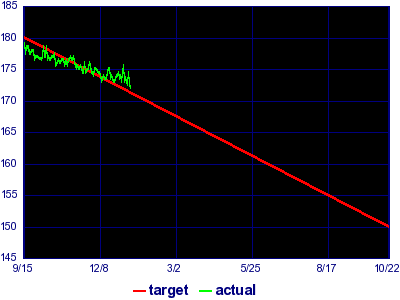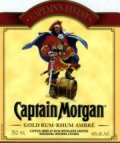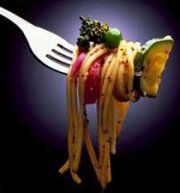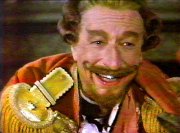In which the author evades a citywide pursuit, battles a gang of ruffians, and kisses two women within minutes of each other.
From seventh through twelfth grades I attended Hunter College High School in Manhattan. I took the subway from Queens in the morning and back again to Queens after school. Most days I rode home with my friend and fellow Queens resident Chuck.
We were two geeky little guys, and we had female counterparts at Hunter: Kathy and Joelle.
They were the sort of girls who were into Tarot and Stevie Nicks and Lord of the Rings and guys who played Dungeons and Dragons. By rights, Chuck and I should have been D&D players, considering our other interests such as computers, electronics, and Star Trek; but we weren’t. That didn’t keep Kathy and Joelle from acting interested in us, though; and being still at the dipping-pigtails-into-inkwells stage of relating to women, Chuck and I feigned displeasure at Kathy’s and Joelle’s attentions.
(Not that they were especially mature themselves. Their nicknames for me and Chuck were “Cow-face” and “Moose-face,” respectively, and they delighted in pretending to annoy us.)
As it happened, Kathy and Joelle also both lived in Queens and so we frequently encountered one another en route in the afternoons. (Somehow none of us ever ran into one another in the mornings.) Whenever this happened, Chuck and I always made a big show of being vexed, and Kathy and Joelle always made a big show of following us as we tried to evade them by switching trains, walking to the far end of the platform, etc.
Of course, it was love, but none of us ever figured that out.
One time, for no particular reason, the chase was truly on. Kathy and Joelle made clear that they’d stick to us like glue on the ride home that day, so the instant school let out, Chuck and I raced for the 96th Street station and counted ourselves lucky to get on a number 6 train almost immediately, before the girls could catch up. At 59th Street we got off the 6 to switch to the N train — and there we found Kathy and Joelle waiting for us! When they saw us run from the school, they knew they’d never catch us if they followed us to the 96th Street station, so they hot-footed it down to 86th Street, where they caught the 4 express and beat us to 59th Street!
You can’t go home again
The N train no longer goes where it used to. The RR train no longer even exists. The one constant in the New York subway is change. Change, and the smell of stale urine. Two! Two constants. Here is what the MTA route system looked like around the time of this story; here is what it looks like today.
Chuck had a plan. On his cue, we unexpectedly hopped onto a departing RR train after its doors had closed (using the cool but stupidly dangerous leap-on-between-cars maneuver), leaving Kathy and Joelle behind once again. At Queensboro Plaza we switched to the 7 train, and got off at Roosevelt Avenue to transfer back onto one of the Queens Boulevard trains.
And there were the girls again, waiting for us with shit-eating grins, having foreseen our strategy. We conceded the battle and rode home the rest of the way with them.
One other time, perhaps a year later, I was waiting on the Queens Plaza platform after school with Joelle, maybe Kathy, maybe Chuck, and maybe one or two other Queens friends, when a group of slightly older kids started verbally taunting us. Naturally we ignored them. Then they began to insult the girls. I got angry and said something to them in the way of a warning, I don’t remember exactly what; then we continued trying to ignore them. The last straw for me was when their harassment became physical, to wit: tapping some of us on the head. I felt protective of my friends and grew uncharacteristically bold. I threw down my knapsack and demanded we be left alone. “What are you gonna do about it?” asked the chief bully, and gave me a shove. I shoved back and the fight was on. We circled each other with our fists up, each of us swinging occasionally and either missing or landing pretty ineffectual blows.
[I am a lover, not a fighter, but I am not above settling the hash of someone deserving. Though I don’t remember it, my mom loves to tell the story of the time I finally snapped and beat the crap out of my elementary school’s resident bully — who treated me as a friend ever after.]
The fight somehow petered out with no resolution. When a train came, his group and mine got on separate cars. It was one of the newer R-46 trains that prevented crossing from one car to the next without an operator’s key, so once we were underway, that was pretty much the end of that.
Through the window to the next car we saw the gang get off at the next stop, Roosevelt Avenue. However, as the conductor announced, “Watch the closing doors” and the door-warning chime went “ding dong,” the bully I’d fought ran back onto my train car, punched me square in the nose (knocking my head back into the wall behind my seat), and hopped back off.
I saw stars. But nothing was broken or bleeding, I had the sympathy and admiration of my friends, and the bully’s cowardly final act had given me a moral victory that I still savor.
There’s a nice little coda to the Bob-Chuck-Kathy-Joelle story in which I get kisses from both women.
In our senior year at Hunter, we had our Spring Carnival in the schoolyard. Kathy was one of a few people manning (“womanning”?) the kissing booth, and for a buck I finally got a smooch from her.
Another booth was a dunk tank — one dollar for one throw of a baseball at a target that would drop some poor sap into a tank of water. To my great surprise, there was Chuck, sitting on the hot seat in a bathing suit and T-shirt, looking distinctly dry. “I’ve got to try this,” I said, as I handed a dollar over to the booth barker — Joelle. Now, Chuck, Joelle, and everybody else in the world knew that I was athletically — what’s the right word? — pathetic. A small crowd gathered of folks who knew this fact and the fact that Chuck and I were best friends. Chuck taunted me confidently from his perch. I wound up and hurled a true baseball-style pitch. On that sunny afternoon the gods of great story endings guided my throw straight and true. The ball struck, a bell rang, and the look of astonishment on Chuck’s face as he fell into the water was worth a million bucks. Joelle squealed, jumped, and gave me a hug and a kiss.

 A few nights ago I was in my study while the kids were jumping around in the bedroom, playing “pirates.” The sounds of mock swordfights filled the air… until suddenly they didn’t. All was silent for several moments. My parental Spidey-sense tingled and I got up to see what they were up to. I found Archer lying prone and smirking on the bed, Jonah leaning over him. Jonah looked up and explained to me, “He drank too much rum.”
A few nights ago I was in my study while the kids were jumping around in the bedroom, playing “pirates.” The sounds of mock swordfights filled the air… until suddenly they didn’t. All was silent for several moments. My parental Spidey-sense tingled and I got up to see what they were up to. I found Archer lying prone and smirking on the bed, Jonah leaning over him. Jonah looked up and explained to me, “He drank too much rum.” One of Goldstein’s friends-and-clients, in turn, was a photographer named
One of Goldstein’s friends-and-clients, in turn, was a photographer named  As I toiled at the computer on a wide variety of projects — now programming, now data entry, now educating myself further in CP/M and later
As I toiled at the computer on a wide variety of projects — now programming, now data entry, now educating myself further in CP/M and later  He was among the best in the business and lots of big-name clients came through the studio. Very often they purchased excessive amounts of food for the shoot and left it behind after the shoot was done. Many were the times I lugged a dozen steaks, a few hundred slices of American cheese, or a crate of Ronzoni spaghetti home on the subway.
He was among the best in the business and lots of big-name clients came through the studio. Very often they purchased excessive amounts of food for the shoot and left it behind after the shoot was done. Many were the times I lugged a dozen steaks, a few hundred slices of American cheese, or a crate of Ronzoni spaghetti home on the subway. When writing about the appeal of the original Star Trek it has become de rigeur to cite its
When writing about the appeal of the original Star Trek it has become de rigeur to cite its  First, a digression. In The Adventures of Baron Munchausen, the Baron, that lovable spinner of fantastical tall tales, is opposed by “The Right Ordinary Horatio Jackson,” a literal-minded and distinctly unlovable bureaucrat who prizes order and rationality over the creative chaos of the Baron’s world. The film depicts rationality robbing the world of adventure and romance.
First, a digression. In The Adventures of Baron Munchausen, the Baron, that lovable spinner of fantastical tall tales, is opposed by “The Right Ordinary Horatio Jackson,” a literal-minded and distinctly unlovable bureaucrat who prizes order and rationality over the creative chaos of the Baron’s world. The film depicts rationality robbing the world of adventure and romance.